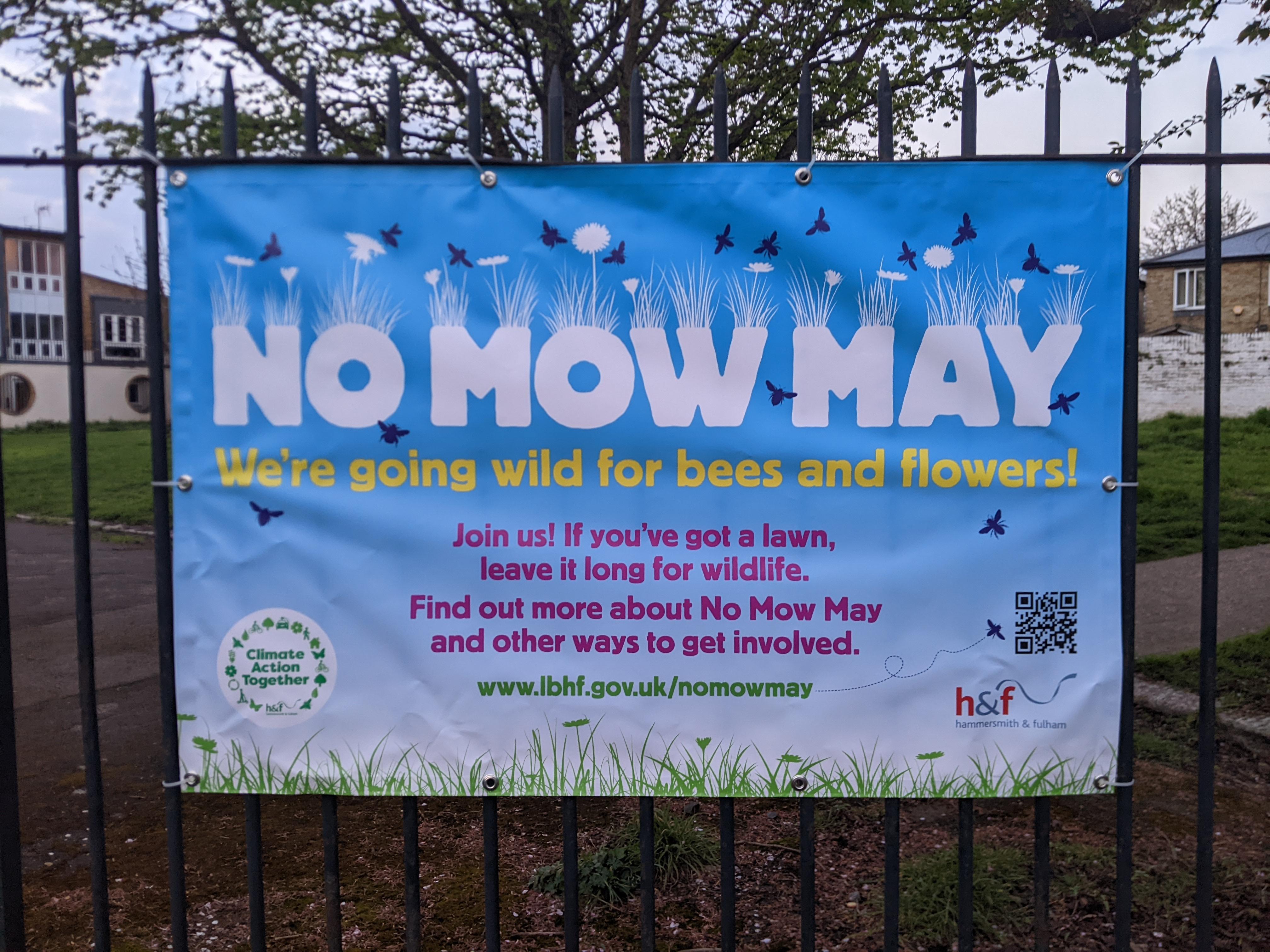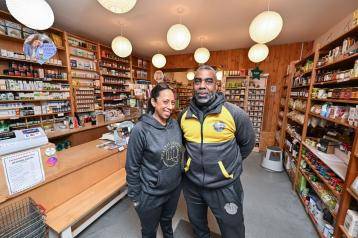
Keep an eye out for our No Mow May banners at more than 50 participating park sites across H&F
More than 50 H&F parks and green spaces are set to go wild again for No Mow May.
Once again, we've instructed our contractors to stop mowing our parks, gardens and road verges to boost biodiversity by letting wildflowers bloom.
We're also asking local residents to leave their lawnmowers in the shed during May, as well as to plant wildflowers in gardens.
"If you've got a lawn or community garden, please join us as we make space for bees, butterflies and insects – and the birds they attract," said Cllr Wesley Harcourt, H&F Cabinet Member for Climate Change & Ecology.
One in five British wildflowers are under threat as 97 per cent of wildflower meadows have been eradicated since the second world war.
History of No Mow May

The charity Plantlife launched the national No Mow May campaign and its Every Flower Counts initiative five years ago. They wanted to challenge people to count the wildflowers and plants in their local area.
"Wild plants and fungi are the foundation of life and shape the world we live in," said Andrew Doyle from Plantlife. "With them gone, so are vital food sources for pollinators such like bees and butterflies."
"We quickly realised that the majority of lawns were mown so often that there were few flowers to count. That's when the idea for No Mow May was born."
With an estimated 24 million gardens in the UK the way we manage our lawns can really make a difference and help address the loss of flower-rich meadows and green spaces.
"Long-term change in mowing over consecutive years will see the greatest benefits for nature," said Andrew. "Over time, more and more plants species will arrive if you give them a chance."
Flower power
Wild plants such as daisies and dandelions provide a true buffet for bees and butterflies, while bumblebees are particularly drawn to selfheal and clover. They all need nectar and pollen to survive.
Other species local to H&F include the cinnabar moth – a day flying moth with tiger striped caterpillars which you may spot on common ragwort – and the speckled wood butterfly which, like many butterflies, relies on wildflowers and long grasses to complete their life cycle.
Use these handy Butterfly Conversation ID guides to find out which butterflies and bumblebees are setting your garden abuzz.
Visit the Plantlife website throughout May for more information and expert guidance around No Mow May, including how-to videos with grasslands experts and lawn plant ID help from wildflower specialists.
No lawn? No problem – find out how to host a Rewilding Raves in your neighbourhood on our webpage here.

Want to read more news stories like this? Subscribe to Climate Connects.




